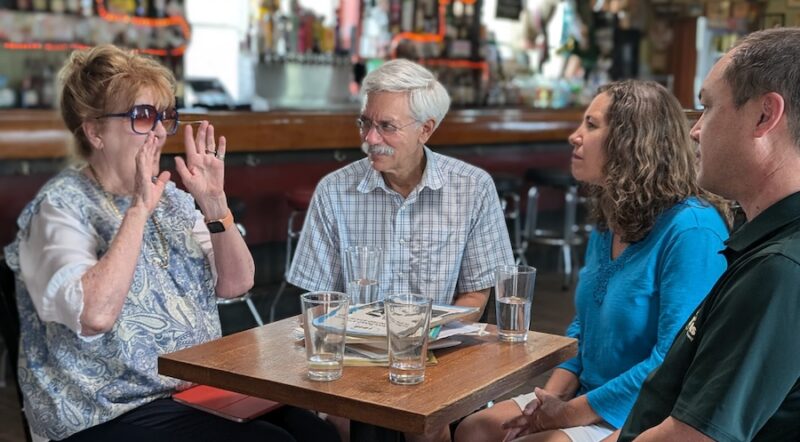Seven Ways Rails-to-Trails Conservancy Brought Big Impact in 2019
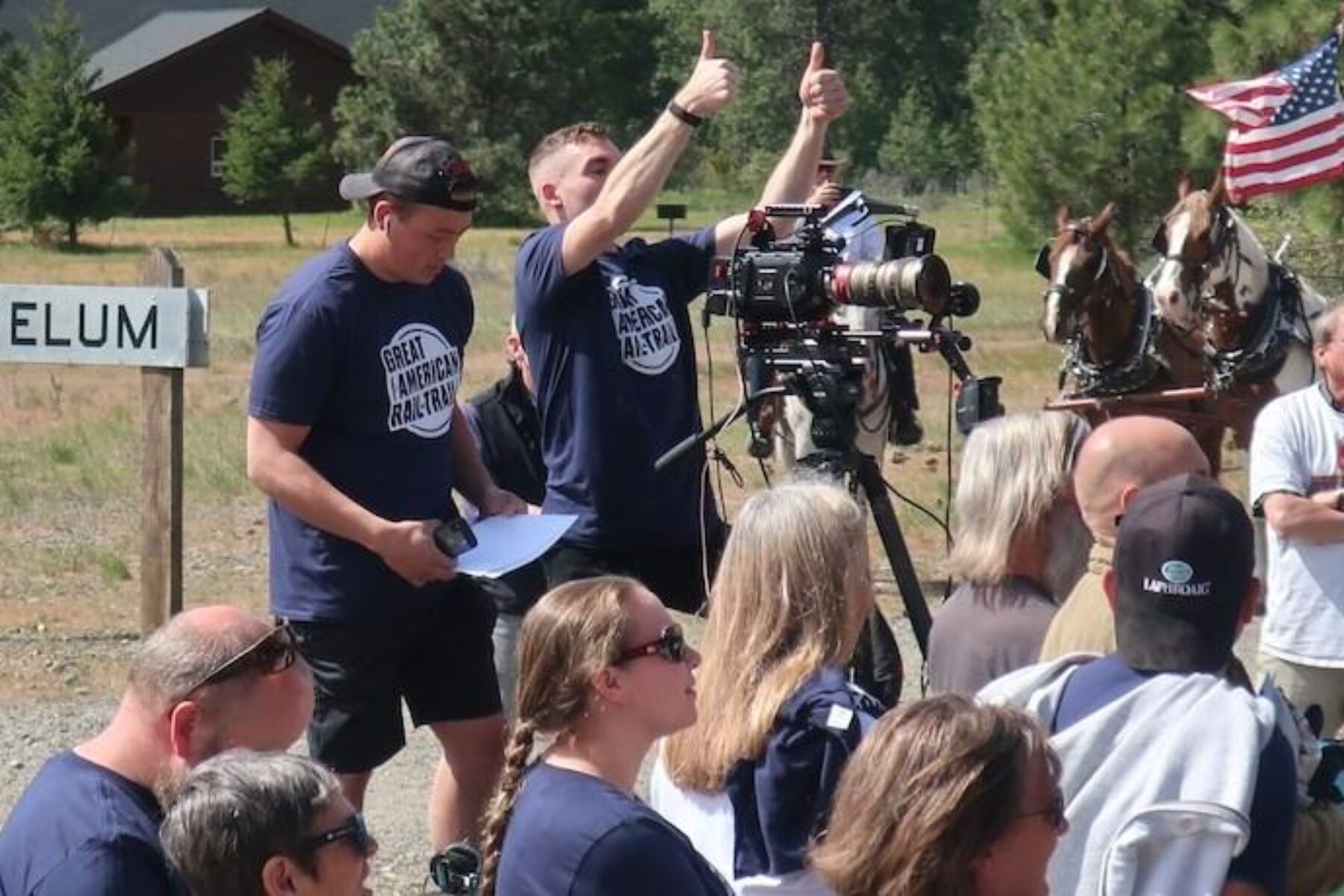
Rails-to-Trails Conservancy (RTC) has a big goal: To connect the entire nation by trail, delivering connected, seamless pathways for walking, biking and rolling that are completely separated from vehicle traffic. And with it, we hope to deliver big, transformative outcomes for people and places—new opportunities for mobility, for economic growth, for health and wellness, for climate protection. And places to simply be outside with friends and family.
This year, we’re proud of the giant leaps, and the small-but-no-less-important bounds that are bringing us closer to our goal, and connecting the country by trail like never before.
1. Creating a “Great American” Cross-Country Connection for the Ages
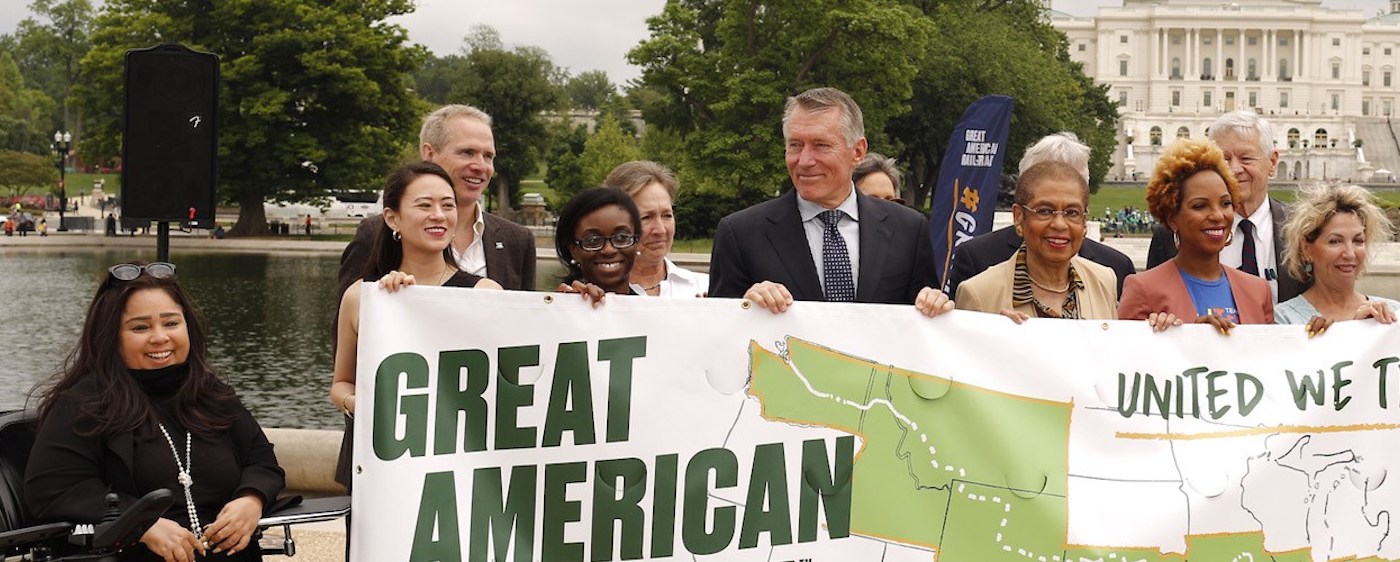
It’s been more than 30 years since a group of like-minded visionaries opened RTC’s doors to transform the country’s disused railroads into trails, and almost as long since RTC first realized a cross-country trail would, one day, be possible. Three decades later—in solidarity with trail builders and advocates in communities across the country—we welcomed the Great American Rail-Trail™, the nation’s most epic trail project ever, spanning more than 3,700-miles and connecting 12 states and the District of Columbia.
Launched by RTC in partnership with hundreds of communities and organizations, and more than 52 percent complete to date, the Great American travels through some of America’s most iconic geography, landscapes, and historic and cultural landmarks that tell the story of America—from its early beginnings to today. When finished, this remarkable American treasure and enduring gift to the nation will connect nearly 50 million people within 50 miles of the route. This historic trail project was made possible due to the successes of the entire trails movement—volunteers, advocates and trail users—over the last half-century and beyond, and we thank everyone who hand a hand in making it possible.
You can support the Great American Rail-Trail
The full Great American route will take several decades to become a reality—but the time is now to ensure ample investment so that communities have the support needed to complete their trails and bring the project to fruition. RTC is providing national leadership and on-the-ground support—the work to organize people, plans and ideas; trail planning and community engagement; the advocacy and marketing that is necessary to completing the Great American Rail-Trail. Learn how you can help support the development of the Great American.
2. Momentum Builds for the Great American Nationwide
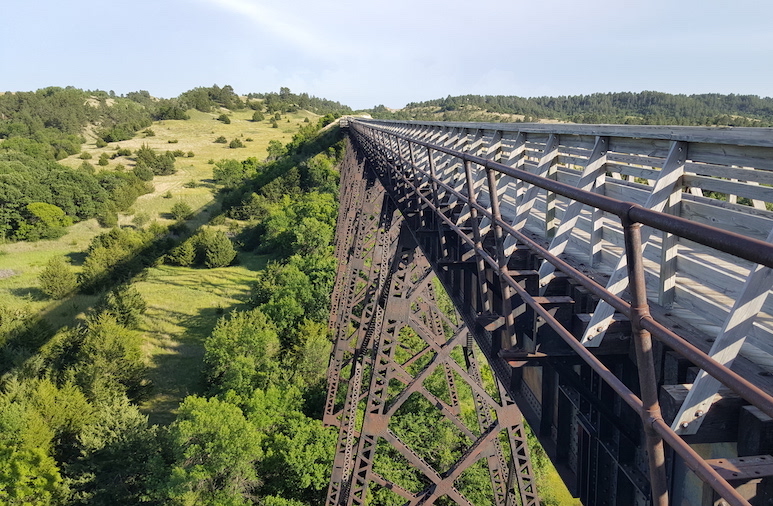
Earlier this year, RTC advocacy efforts in collaboration with partners across the route yielded more than $7.2 million in federal, state and local funds for project trails, and helped build early support for the Great American regionally and nationally. This momentum resonated in Nebraska—where a $65,000 RTC pass-through grant helped secure an additional $700,000 in Recreational Trails Program funds from the Nebraska Game and Parks Commission to help complete the 321-mile Cowboy Trail—and in the Quad Cities, where we rallied hundreds of residents and public leaders to shine a light on the transformative impact of local trails, for economic growth, active transportation and health, and to show Congress how critical it is to invest in their development.
And the momentum grew steadily in 2019—with 17 miles of new trail open by fall, including key sections in Ohio, Indiana, Iowa, Nebraska and Montana, and lots more expected in 2020. Additionally, tens of thousands of Americans stepped forward to support the Great American by donating, speaking out and learning more.
3. Connecting a TrailNation™ Part 1: Moving the Project Dial Forward

Through our portfolio of eight TrailNation projects spanning 35 to 2,700 miles, our collaborations helped to generate new opportunities for connectivity across the country. Early in 2019, through the Capital Trails Coalition, we announced the identification of 40 featured projects that will provide a foundation for the entire 800-miles-plus trail network, which equitably knits together the walking and bicycling infrastructure serving millions of people per year in the D.C. metro area.
Then in April, on Opening Day for Trails, we stood alongside our partners in Cleveland to present our Bikeable™ study, “Advancing Cleveland’s Active Transportation Agenda,” which helped underscore the benefits of investing in the city’s bicycling infrastructure, and found that a build-out of the city’s planned network could open up low-stress bike access for more than a quarter of the city’s residents. Additionally, RTC and partners in Milwaukee unveiled the official trail network map for the Route of the Badger, which connects seven counties across 700 miles in southeastern Wisconsin. Badger trail projects currently in the works will help transform the Milwaukee metropolitan region and improve walking and bicycling connectivity for an estimated 200,000 people.
This fall, through the Bay Area Trails Collaborative in California, we celebrated the long-awaited Richmond-San Rafael Bridge bike and pedestrian path—a new 6-mile trail that parallels I-580 and provides the first-ever fully protected east-west pedestrian and bicycle lane across the Bay. The new path also establishes a critical connection between several important segments of the collaborative’s proposed 2,700-mile regional trail network, connecting all nine Bay Area counties.
Related: New Transbay Crossing: Richmond-San Rafael Bridge Bike and Pedestrian Path Opens in California
4. Connecting a TrailNation Part 2: Funding for the Future
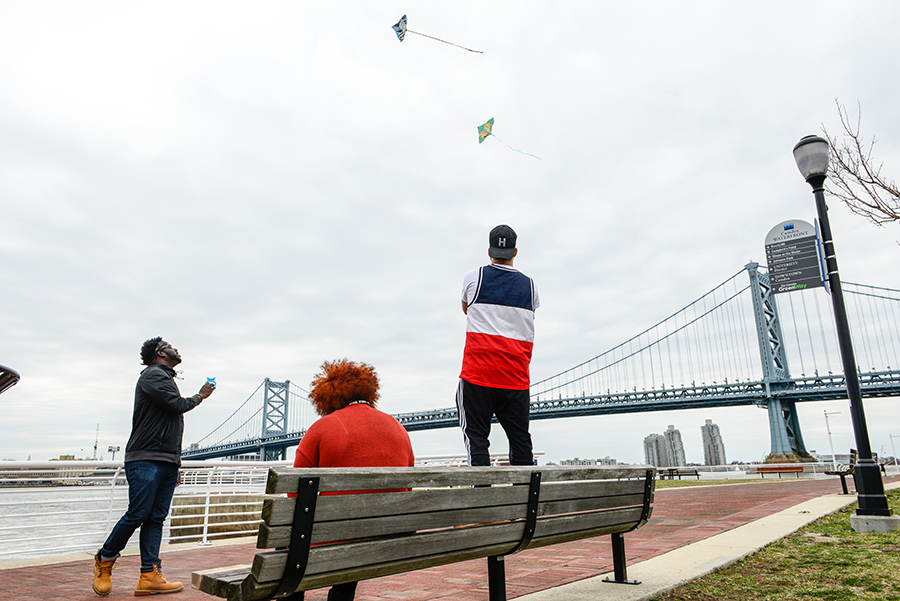
To help support projects in New Jersey that will play a significant role in improving mobility for local residents—the Circuit Trails Coalition in the Greater Philadelphia-Camden Area engaged in coordinated advocacy that resulted in the New Jersey Department of Transportation authorizing $23 million in Transportation Alternatives (TA) funds to move 30 trail, walking and bicycling projects forward—and then an additional $27 million through the TA Set-Aside and Safe Routes to School programs, $3.6 million of which benefits six transformative projects in the 800-mile Circuit Trails network.
And with huge momentum for trails and walking and bicycling infrastructure development in California through the state’s Active Transportation Program—RTC provided technical assistance to a number of disadvantaged communities that secured some of the more than $139 million awarded for trails and separated bikeways, creating new connections to key destinations such as employment centers, schools and open space.
5. Standing for a Statewide Trail in New York
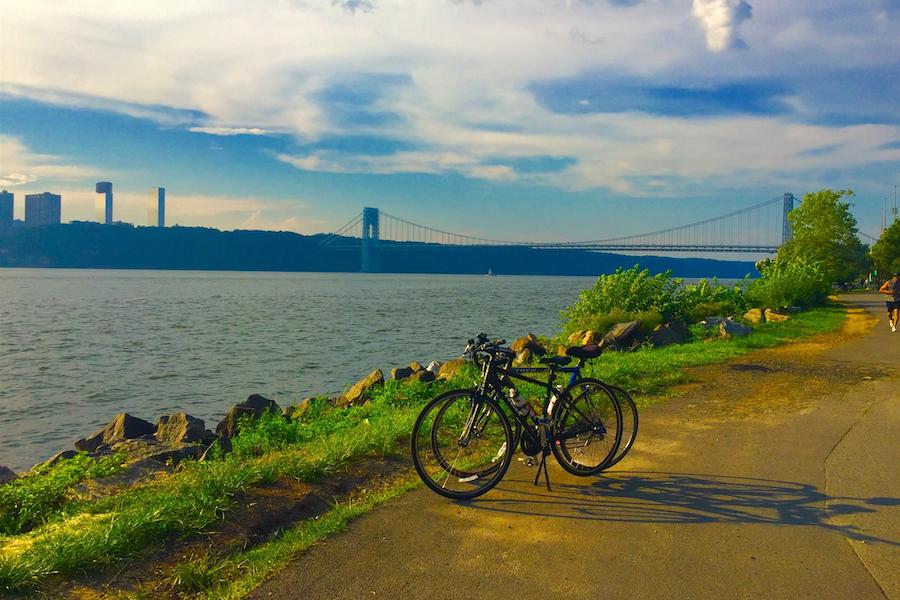
It’s been an honor to stand with our incredible partner, Parks & Trails New York, for the past several years to tirelessly advocate for a statewide trail network as part of our Trails Across New York campaign. The plan includes leveraging—as a major spine for the network—the developing Empire State Trail, set for completion by 2020 and encompassing a 750-mile (75% complete) route spanning from New York City to Canada, and Buffalo to Albany.
In November, we got a huge boost when Gov. Andrew Cuomo signed legislation—passed by the New York legislature in June and introduced by Sen. Anna Kaplan and Assemblymember Patricia Fahy—for a statewide trails plan. The impact of the Empire State Trail alone is staggering, with a potential to host 8.6 million visitors annually and compound the economic benefits of the state’s outdoor recreation economy, which already generates $41.8 billion in consumer spending per year and supports 313,000 jobs. The statewide trail plan will allow New York to harness the power of the Empire State Trail as a massive spine to connect and expand trail networks across the state, and to identify funding and projects that would have the greatest impact on connectivity.
In order to build a robust, modern transportation system that serves all Americans, federal investment needs to carve out funding designed to create and maintain connected active transportation networks.
6. A Transformative Vision for Trails and Active Transportation
States and local communities nationwide are seeking to invest in safe, connected trail and active transportation networks, which they know can transform America and deliver myriad transportation, health, equity, environmental and economic outcomes. With the FAST ACT—the main federal law currently governing America’s surface transportation programs, including trails—set to expire in September 2020, RTC continues to urge Congress to take bold steps to meet this demand.
Launched in Fall 2019, RTC’s national study, “Active Transportation Transforms America,” shows that investing public funds in trails and active transportation networks delivers powerful outcomes that are multiplied as connectivity improves. In fact, the findings of this report reveal that the potential annual return on investment of connected active-transportation infrastructure—currently producing an estimated combined health, climate and economic return of $34 billion—could be as high as $73 billion+ in a modest increase scenario and $138 billion+ in a substantial increase scenario.
RTC urges supporters to tell Congress how critical it is to invest in this vital infrastructure, by expanding and improving programs such as the Transportation Alternatives and Recreational Trails Program—together the largest sources of federal funding for trails in the United Sates—and focusing investment in trail connectivity, within and between communities and states.
Learn how you can speak out for trails.
7. Missouri Announces Historic Step Forward for Rock Island Trail Project
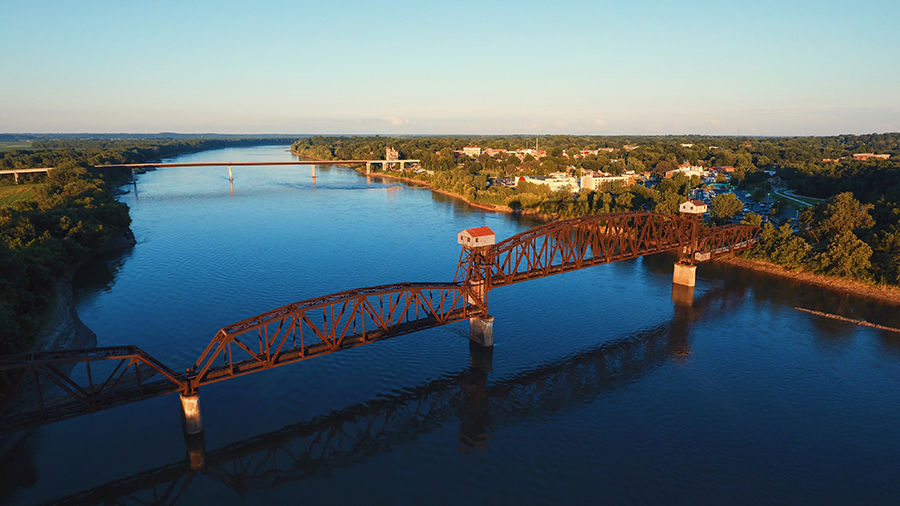
For almost five years, RTC and partners in Missouri have been leading an effort to bring to fruition the Rock Island Trail, a 144-mile proposed pathway connecting Windsor and Beaufort that would bring transformative benefits to nearly two-dozen communities. The trail would also connect with the Katy Trail to form a seamless loop stretching for more than 450 miles.
Mobilization efforts in partnership with Missouri Rock Island Trail, Inc., have helped demonstrate overwhelming public support for the trail, with more than 30,000 comments in favor of the trail submitted to the state as it has undergone negotiations with the corridor’s owner, Ameren, to railbank the line.
In December, the Missouri Department of Natural Resources announced that they had signed an interim trail use agreement with Missouri Central Railroad Company (a subsidiary of Ameren), marking a major and historic step forward toward railbanking the corridor and transforming it into a community walking and bicycling asset for tourism, health and active transportation. When complete, the Rock Island Trail could serve as a multiplier for the economic benefits already generated by the Katy Trail, which receives 400,000 visitors each year and has an economic impact of more than $18 million.

Donate
Everyone deserves access to safe ways to walk, bike, and be active outdoors.


